Stink Bugs
go.ncsu.edu/readext?646309
en Español / em Português
El inglés es el idioma de control de esta página. En la medida en que haya algún conflicto entre la traducción al inglés y la traducción, el inglés prevalece.
Al hacer clic en el enlace de traducción se activa un servicio de traducción gratuito para convertir la página al español. Al igual que con cualquier traducción por Internet, la conversión no es sensible al contexto y puede que no traduzca el texto en su significado original. NC State Extension no garantiza la exactitud del texto traducido. Por favor, tenga en cuenta que algunas aplicaciones y/o servicios pueden no funcionar como se espera cuando se traducen.
Português
Inglês é o idioma de controle desta página. Na medida que haja algum conflito entre o texto original em Inglês e a tradução, o Inglês prevalece.
Ao clicar no link de tradução, um serviço gratuito de tradução será ativado para converter a página para o Português. Como em qualquer tradução pela internet, a conversão não é sensivel ao contexto e pode não ocorrer a tradução para o significado orginal. O serviço de Extensão da Carolina do Norte (NC State Extension) não garante a exatidão do texto traduzido. Por favor, observe que algumas funções ou serviços podem não funcionar como esperado após a tradução.
English
English is the controlling language of this page. To the extent there is any conflict between the English text and the translation, English controls.
Clicking on the translation link activates a free translation service to convert the page to Spanish. As with any Internet translation, the conversion is not context-sensitive and may not translate the text to its original meaning. NC State Extension does not guarantee the accuracy of the translated text. Please note that some applications and/or services may not function as expected when translated.
Collapse ▲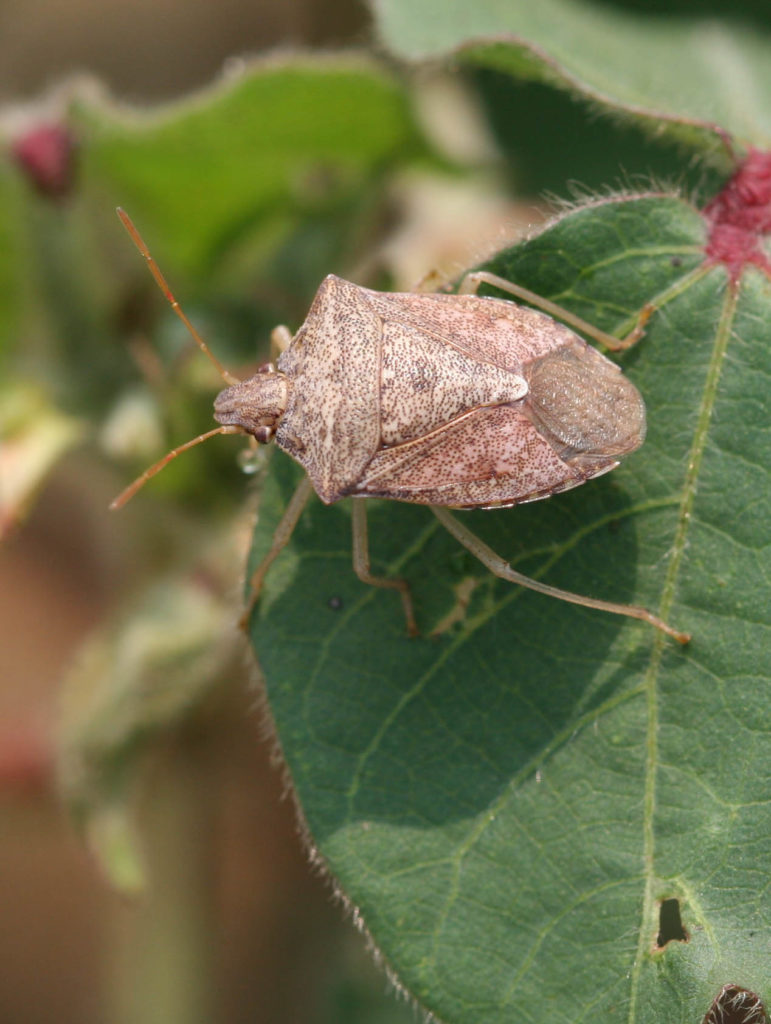 Brown stink bug, brown marmorated stink bug, green stink bug, and southern green stink bug can be very damaging pests of cotton. Here is a guide to their identification. Stink bugs often invade cotton fields in early to mid-July and may reach damaging levels from this time through late August. They damage cotton by puncturing the carpal walls of bolls with their “beaks,” and feed primarily on the soft developing seeds. Heavy feeding can completely destroy small bolls, causing them to abort. When stink bugs feed on slightly larger to medium-sized bolls (up to about 3.5 weeks), they often introduce hardlock and/or bollrot pathogens, resulting in partially or entirely destroyed locks, hard-lock, and a lower grade of harvested cotton.
Brown stink bug, brown marmorated stink bug, green stink bug, and southern green stink bug can be very damaging pests of cotton. Here is a guide to their identification. Stink bugs often invade cotton fields in early to mid-July and may reach damaging levels from this time through late August. They damage cotton by puncturing the carpal walls of bolls with their “beaks,” and feed primarily on the soft developing seeds. Heavy feeding can completely destroy small bolls, causing them to abort. When stink bugs feed on slightly larger to medium-sized bolls (up to about 3.5 weeks), they often introduce hardlock and/or bollrot pathogens, resulting in partially or entirely destroyed locks, hard-lock, and a lower grade of harvested cotton.
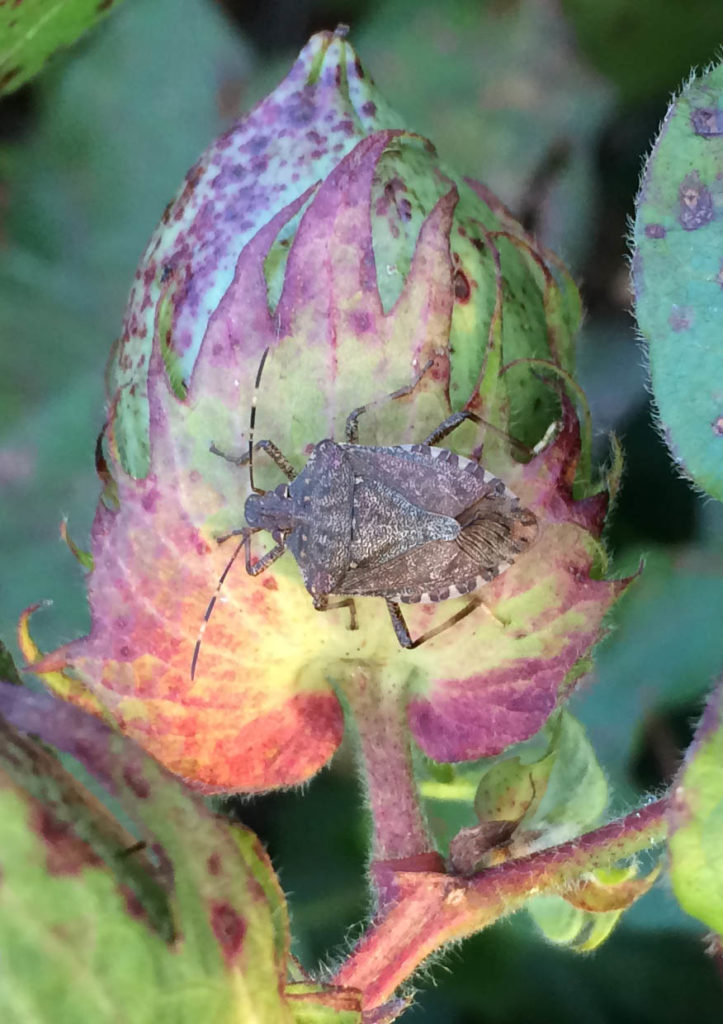 Brown marmorated stink bug, in contrast to the other species, can feed on, and prefers, larger-sized bolls, even as a nymph. Internal damage to bolls seems to be expressed more in mature opening bolls in wet humid weather. Stink bugs, unlike plant bugs, do not cause square shed, but in some circumstances can cause boll shed.
Brown marmorated stink bug, in contrast to the other species, can feed on, and prefers, larger-sized bolls, even as a nymph. Internal damage to bolls seems to be expressed more in mature opening bolls in wet humid weather. Stink bugs, unlike plant bugs, do not cause square shed, but in some circumstances can cause boll shed.
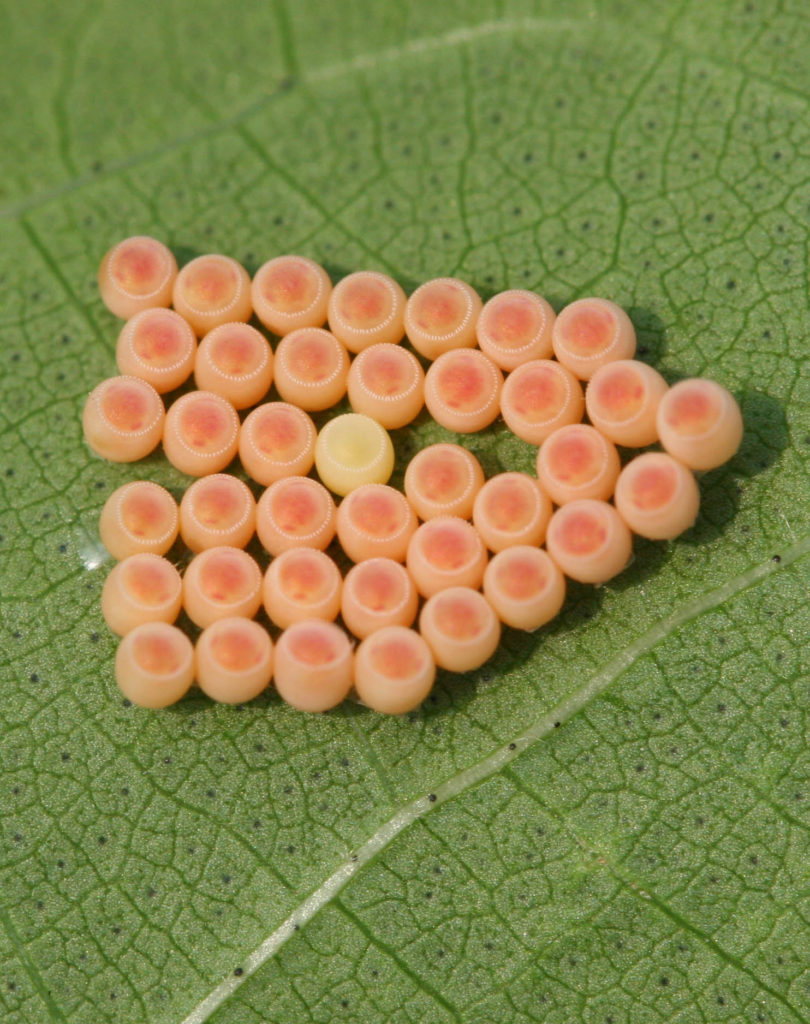 Externally, boll injury is characterized by small, round, shallow, purplish depressions, usually in the 1/32- to 1/16-inch range. These spots tend to be larger than the tiny spots usually seen on maturing bolls in the absence of stink bug feeding. Internally, the injured bolls often have a yellowish to tan to brown stain in the seed areas, which often, but not always, appears under the external feeding spots. Other injury symptoms include small wart-like growths or dark “pin prick” spots on the inside of the boll wall. This internal boll damage can be identical to that caused by tarnished plant bugs, but plant bugs damage smaller bolls than stink bugs (> 12-day old bolls). Internal boll damage may be present without obvious external evidence.
Externally, boll injury is characterized by small, round, shallow, purplish depressions, usually in the 1/32- to 1/16-inch range. These spots tend to be larger than the tiny spots usually seen on maturing bolls in the absence of stink bug feeding. Internally, the injured bolls often have a yellowish to tan to brown stain in the seed areas, which often, but not always, appears under the external feeding spots. Other injury symptoms include small wart-like growths or dark “pin prick” spots on the inside of the boll wall. This internal boll damage can be identical to that caused by tarnished plant bugs, but plant bugs damage smaller bolls than stink bugs (> 12-day old bolls). Internal boll damage may be present without obvious external evidence.
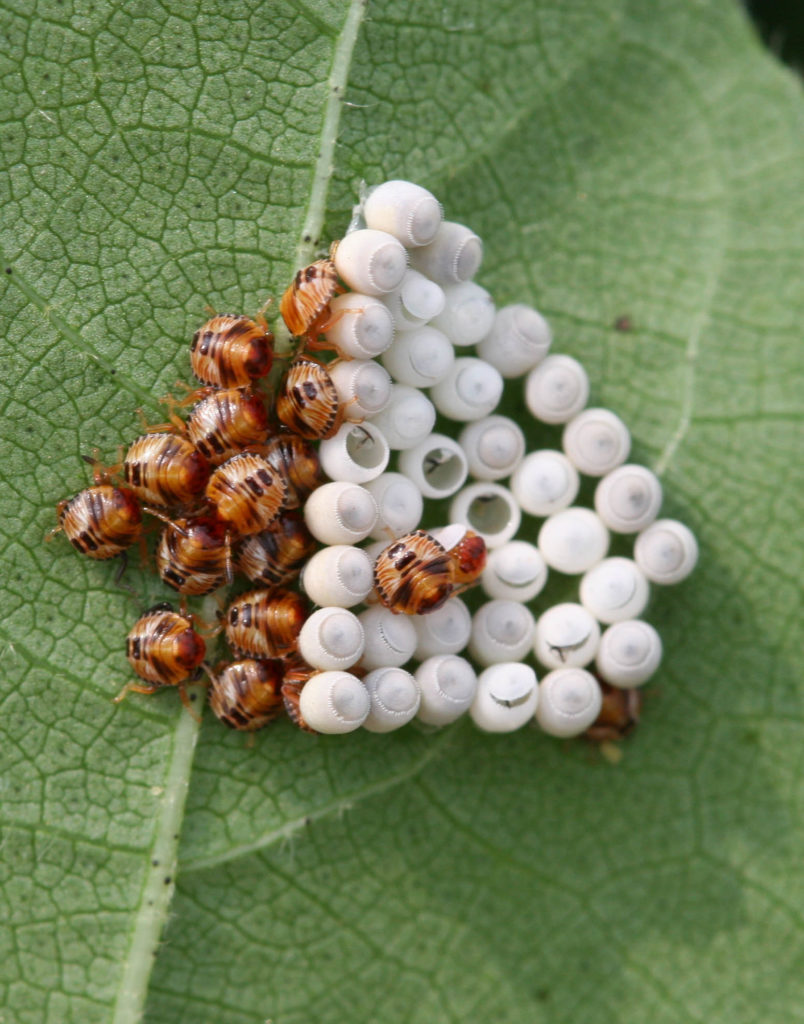 Stink bug damage is more prevalent in fields where tarnished plant bug treatments have been minimal (that is, none or one) or where a diamide-class insecticide alone has been used for bollworm. Despite this general rule, significant stink bug damage may occasionally occur before bollworm insecticide applications. Because stink bug and tarnished plant bug damage symptoms are often indistinguishable, damaged bolls may sometimes be the result of feeding by either or both kinds of bugs. At present in most areas, stink bug damage to bolls is more widespread throughout the state than plant bug damage, though tarnished plant bug damage in some years can be significant, especially in eastern counties.
Stink bug damage is more prevalent in fields where tarnished plant bug treatments have been minimal (that is, none or one) or where a diamide-class insecticide alone has been used for bollworm. Despite this general rule, significant stink bug damage may occasionally occur before bollworm insecticide applications. Because stink bug and tarnished plant bug damage symptoms are often indistinguishable, damaged bolls may sometimes be the result of feeding by either or both kinds of bugs. At present in most areas, stink bug damage to bolls is more widespread throughout the state than plant bug damage, though tarnished plant bug damage in some years can be significant, especially in eastern counties.
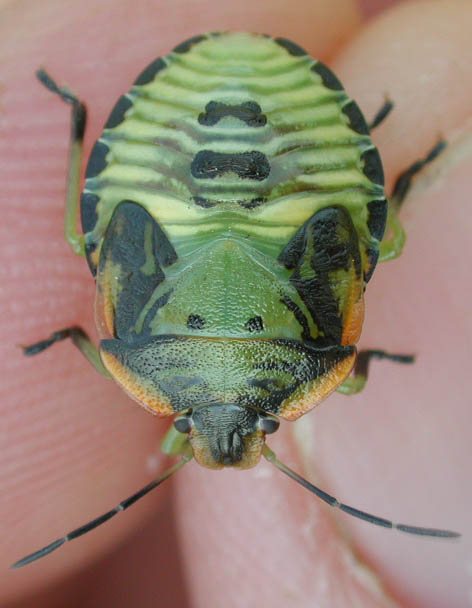 Beginning at anthesis (first bloom), one quarter-sized boll per acre with a minimum of 25 bolls per field should be sampled at least weekly for internal damage to bolls. In cotton fields greater than 10 acres, additional samples should be taken. Bolls should be either hand-crushed or opened with a knife and each lock examined for the presence of stained lint or raised warts on the inner surface of the carpal wall.
Beginning at anthesis (first bloom), one quarter-sized boll per acre with a minimum of 25 bolls per field should be sampled at least weekly for internal damage to bolls. In cotton fields greater than 10 acres, additional samples should be taken. Bolls should be either hand-crushed or opened with a knife and each lock examined for the presence of stained lint or raised warts on the inner surface of the carpal wall.
 No matter how insignificant, if any stained lint or a wart is found, that boll is counted as injured. Because the small non-raised dark green “pin prick-like” marks on the inner carpal wall surface and external stink bug damage spots are not as well correlated with subsequent boll injury, only warts and stain are counted. Because stink bugs can be unevenly distributed within a cotton field, it is important to take boll samples from throughout the field and to not be overly influenced by relatively small areas of high stink bug injury or field edges. The use of both the dynamic threshold along with the Stink Bug Decision Aid app is advised (see below). The percent damage bolls in the sample is compared to the suggested dynamic threshold based on week of bloom (Table 1).
No matter how insignificant, if any stained lint or a wart is found, that boll is counted as injured. Because the small non-raised dark green “pin prick-like” marks on the inner carpal wall surface and external stink bug damage spots are not as well correlated with subsequent boll injury, only warts and stain are counted. Because stink bugs can be unevenly distributed within a cotton field, it is important to take boll samples from throughout the field and to not be overly influenced by relatively small areas of high stink bug injury or field edges. The use of both the dynamic threshold along with the Stink Bug Decision Aid app is advised (see below). The percent damage bolls in the sample is compared to the suggested dynamic threshold based on week of bloom (Table 1).
| Week of bloom | Threshold |
|---|---|
| 1 | 50 |
| 2 | 30 |
| 3 | 10 |
| 4 | 10 |
| 5 | 10 |
| 6 | 20 |
| 7 | 30 |
| 8 | 50 |
Table 1. Suggested threshold based on week of bloom. Weeks 3 through 5 of the bloom, constitute the period of high boll vulnerability to stink bug injury and yield loss.
Stink Bug Decision Aid Card and Associated Apps
A 3×6-inch plastic stink bug decision aid field card was developed to encourage 1) the increased adoption of scouting for stink bug injury, 2) better field identification of stink bug-induced damage symptoms and 3) use of recommended scouting procedures and thresholds. The “GA Cotton Insect Advisor” app can be used in tandem with the card to help with insecticide selection as well as the “SE Agricultural Stink Bug ID” app for species identification.
Stink Bug Thresholds
Use thresholds of 50, 20, 10, 10, 10, 20, 30 and 50% internal injury to quarter-sized bolls (count warts and stained lint) during weeks 1 to 8 of the bloom period, respectively (see Table 1).


